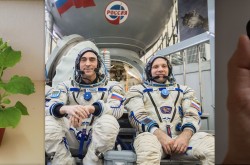An Erupting Black Hole in a Large Elliptical Galaxy

A super massive black hole lurks at the centre of most galaxies. This fact alone indicates that black holes and galaxies must somehow co-evolve, each shepherding the others growth and function. But how do black holes and their host galaxies physically act on each other?
In some recent work done using the Chandra X-ray Observatory, astrophysicists have found evidence of massive periodic jets shooting out from the centre of galaxy NGC 4696 (the 4696th galaxy in the New General Catalogue). Every 5 to 10 million years, the jets turn on, dumping a massive amount of mass and energy out into the galaxy and its surrounding environment. This black hole 'heart beat' may help answer the question: how do black holes shape their galactic environment?


























